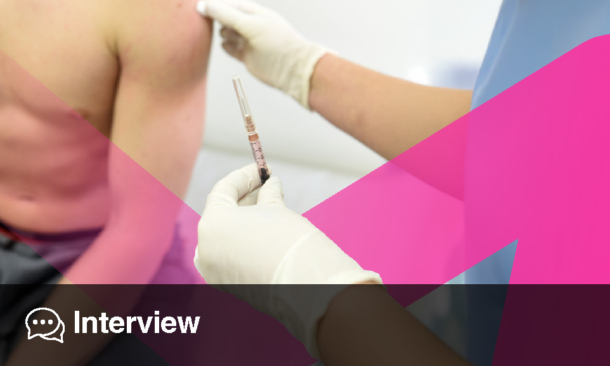Written by Dr Richard Pile | Parkbury House Surgery, St Albans, UK
Disclaimer: Dr Richard Pile is a GP partner at Parkbury House Surgery, St Albans, specialising in cardiovascular and lifestyle medicine. He is involved in training, mentoring, and appraising GPs. He is also on the board of Herts Valleys Clinical Commissioning Group, leading on Wellbeing and Urgent Care. As part of his interest in lifestyle medicine he is both a GP advisor to Thrive Tribe, an award winning national healthy lifestyle provider, and also a director and cofounder of Living Life Better, a company that provides wellbeing support and advice to individuals and companies. More information can be found here https://livinglifebetter.uk.
![]()
Primary care has undergone more change in the last few weeks than in the preceding decade, a huge reaction catalysed by COVID-19. The NHS landscape is changing rapidly and dramatically, some of it forever. There is much to admire, much to lament, and some big unanswered questions.
The Good
Practices and primary care networks (PCN) have been pulling together like never before to address the COVID-19 pandemic, moving at a pace that up to that point had been lacking. For the last year or more we’ve been asking whether any further investment in PCN was justified, with critics saying they were an example of form over function, pushed on primary care by NHS England before thought had been given to what they were for. Now, plans are being drawn up for practices to support each other within and between PCN, to provide clinical, administrative, financial, and managerial stability. Conversations are taking place about hot and cold sites, as well as sharing lists and patient records to provide the best possible care in these times. Business as usual, in terms of targets and nonurgent services, has rightly been suspended. There has been a leap to adopting triage across most practices; this is being done through telephone and video consultation, by doctors and nurses alike.
Change often occurs when driven by need and urgency. My practice has been leading the way in triage for over 10 years and required very little adjustment. Other practices have gone from zero to full triage in days to weeks, a seismic shift that many wanted to make historically but were nervous about doing so. IT is working well, for the most part. My practice has been paperless for almost 20 years and routinely uses telemedicine as part of the consultation. We are not unusual: primary care and commissioners have always invested in IT and as a result we are often decades ahead of secondary care where patient records may still be paper based. Most practices in our clinical commissioning groups (CCG) use a clinical system called EMIS, which means we can share patient records. There is also an excellent third-party app call accuRx which now allows us to communicate with our patients via SMS and video consultation, sending them electronic documents without them having to collect them from the surgery. We use apps such as Zoom, Webex, and Microsoft Teams to have remote practice, PCN, and CCG meetings, and have set up almost our entire surgery team for remote working, crucial at this time then people are required to self-isolate.
The Bad
When we asked for PPE, we were told to set ourselves up on the NHS supplier’s database and order our own, which we were denied access to when we tried to register. We bought what we could get ourselves initially. I ordered myself my own safety-compliant mask from Screwfix after watching a YouTube video by an intensive therapy unit doctor who had done the same. When we wanted to use remote working solutions in anticipation of workforce problems, we were told that we had to wait weeks before we could have officially funded and NHS-approved solutions. We instead sourced our own, which turned out to be crucial as we lost staff in our practice to self-isolation. When I was asked whether, as caldicott guardian for our practice, I was worried we might fall foul of the GDPR data governance guidelines, I replied saying that in all likelihood nothing would happen. This turned out being correct, and the subsequent guidance endorsed our approach, albeit belatedly.
When we first started having meetings about respiratory ‘hot hubs’ or ‘red zones’ and came up with our own sensible clinical pathway, led by the CCG with input from primary, secondary, and community care services, we asked for NHS England approval to cover us as we tried to get ahead of the curve. We were told that until we got a national pathway it was a matter for ‘local decision making’ and that they would be “interested in our sharing the results” with them. In my opinion this was not an adequate response in the time of crisis.
Testing is still a source of frustration to NHS workers. We started by testing at the beginning of this crisis, then stopped (in the community at least) and have yet to scale up to anything like the numbers that the World Health Organization (WHO) feels are essential to managing this crisis. This is improving and will hopefully be an important part of managing this pandemic. Public Health England have approved an an antibody test manufactured by Roche, which be rolled out (starting with NHS and other key workers) at the end of May.
The Uncertainty
We are now heading into the unknown. Hospital admissions and deaths are on the decrease overall. Intensive therapy units are no longer full, and the Nightingale Hospitals, set up to cope with thousands of patients, are likely to be mothballed, at least for now. Lockdown has been slightly (if confusingly) relaxed, and with this will come the increased risk of a second wave, particularly if people don’t follow the guidance about social distancing.
In primary care there is still a lot of uncertainty as we move into what the government is now calling Phase 2. People still need general medical services and advice for non-COVID-19 related issues, mental health support, and referrals for cancer and other diseases. Many patients affected by COVID-19 are now being discharged from hospital, some with significant complications that will need ongoing support in the community. There are concerns about a tidal wave of unmet need that will result in primary care being overrun just as the pressure is easing in hospitals. The complexities of caring for shielded patients, identified as being highly vulnerable to COVID and its potential complications, raise big questions about workload and capacity.
What will primary care look like once the crisis is over and life returns to something approaching normality? Many of us will be grateful for a bit of mundane business as usual. We look forward to carrying on providing care for the patients that we have known for many years; however, some enduring changes would be welcome. We might well carry on using IT more in the way we consult with patients, work, and share information with each other. It could be that people will have become used to self-managing minor illness and will continue to do so perhaps more than they did prior to COVID. Some of the collaborative ways of working, set up when we felt we had no choice, might be the preferred option moving forward. One thing is for certain: there is to be a new normal. Things won’t ever be the same. Hopefully they will be better.








